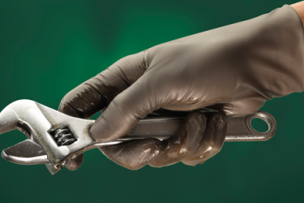We asked safety experts the same question about their surprise inspections, and their answers are enlightening.
OSHA inspectors, otherwise known as compliance safety and health officers, visit workplaces to examine and evaluate best practices and standards while ensuring companies comply with state and federal regulations. They are trained experts on all things regarding safety on the job—from handling hazardous materials to creating an evacuation plan. While inspections occur during regular working hours, they are typically done without advance notice.
We asked five safety professionals the same question: What do you wish you remembered before your last surprise OSHA inspection? Their answers will help you prepare for the unexpected.
“I’d want to have my drawers in complete compliance so that when that inspector comes in, I have every ‘t’ crossed and ‘i’ dotted. Because the first thing OSHA will do is look in your drawers, and you don’t want to leave a responsibility assigned to you under the law to be unaddressed on paper. If you don’t have it on paper, you can’t prove you were doing it. If you don’t have a program in place, you can’t prove you were doing the right thing.
“You need to have your policies, your written programs, your SOPs, your training, an assignment of employee responsibilities and how you’re holding them accountable, and then, finally, an audit. If you have everything in your file cabinet drawers in alignment, you should have no fear of being able to show the inspector that you have satisfied your fiduciary responsibility for due diligence under the law.” Frank Quarato, founder and president, Center for Safety & Environmental Management, Apollo, Pennsylvania
***
“We had our plan for how to deal with an inspection, and we practiced our plan. However, we did not consider what happens when you have a temporary employee filling in for your receptionist. The temp did not know the plan, and she announced over our PA system that OSHA was here. It was a very uncomfortable inspection.
“So what we did was, we made the plan very visible in the primary location. At the front desk, the first area that a compliance officer is going to meet someone representing the company, there is a folder on the side of the desk containing explicit instructions for what to do, whom to contact, where to have the compliance officer go. So we turned that from a negative into a long-term positive.” Michelle Graveen, workplace safety editor, J.J. Keller & Associates, Neenah, Wisconsin
***
“I would want to make sure we are consistent in the way that we administer our safety program. Too many businesses have elaborate plans on the shelf, but they rarely fully implement them. So basically, walk the talk.
“For example, if you have your injury and illness prevention program and it says you will inspect the workplace at a certain frequency, that needs to be done and it needs to be documented. If your plan calls for correcting issues when they come up, make sure there’s a track record and accountability for those and that you’ve documented that you’re correcting them.
“Unfortunately, too many times, we measure safety by its absence, or after the fact. People assume they’re safe because they haven’t had an accident. But safety is actually a proactive thing. The programs we have in place are the way we’re carrying out the business of safety in the organization. Safety is in your processes and the way you implement them.” Paul Gantt, president and founder, Safety Compliance Management, San Ramon, California
***
“One thing we see a lot is when company training records are not up to date and they haven’t trained employees properly. So something I wish we would have done before the last surprise inspection is to make sure the employees on the job site had all the required training.
“That might sound basic, but all too often we find, let’s say in the instance of construction or excavation work, the company might not have someone with trenching and excavation safety training on-site. Or if it’s a plant environment, the person operating the mixer, who has to reach into it to clean it at the end of the day, doesn’t have lockout/tagout training.
“The company may have thought they did, but suppose the operations department hired a new employee and that individual had had training 10 years ago with a previous employer—that’s not going to work. That’s an immediate citation for the employer.” Stephen Yates, president, Optimum Safety Management, Naperville, Illinois
***
“An often overlooked and sometimes underappreciated aspect to being ready for an OSHA inspection is maintaining the workplace in a neat and orderly condition. An establishment that maintains a high standard for general housekeeping does, and I would argue rightly so, project a positive first impression. It demonstrates management and employee pride in their workplace and attention to detail, which translates well for safety awareness.
“Compliance officers are more interested in finding and inspecting the recalcitrant employers. So if your worksite has no or very little inspection history, the compliance officer could be influenced by first impressions. If you have a neat and orderly workplace, employees are wearing any necessary personal protective equipment, and the safety programs and training records are up to date, you greatly reduce the chance of exposing your employees to seriously harmful hazards and a potentially expensive citation.” Gabe Sierra, founder and managing director, Prometrix Safety Consulting, Vienna, Virginia
What do you wish you had remembered before your last unannounced OSHA inspection?


Talk to Us!
Leave a reply
Your email address will not be published. Required fields are marked *